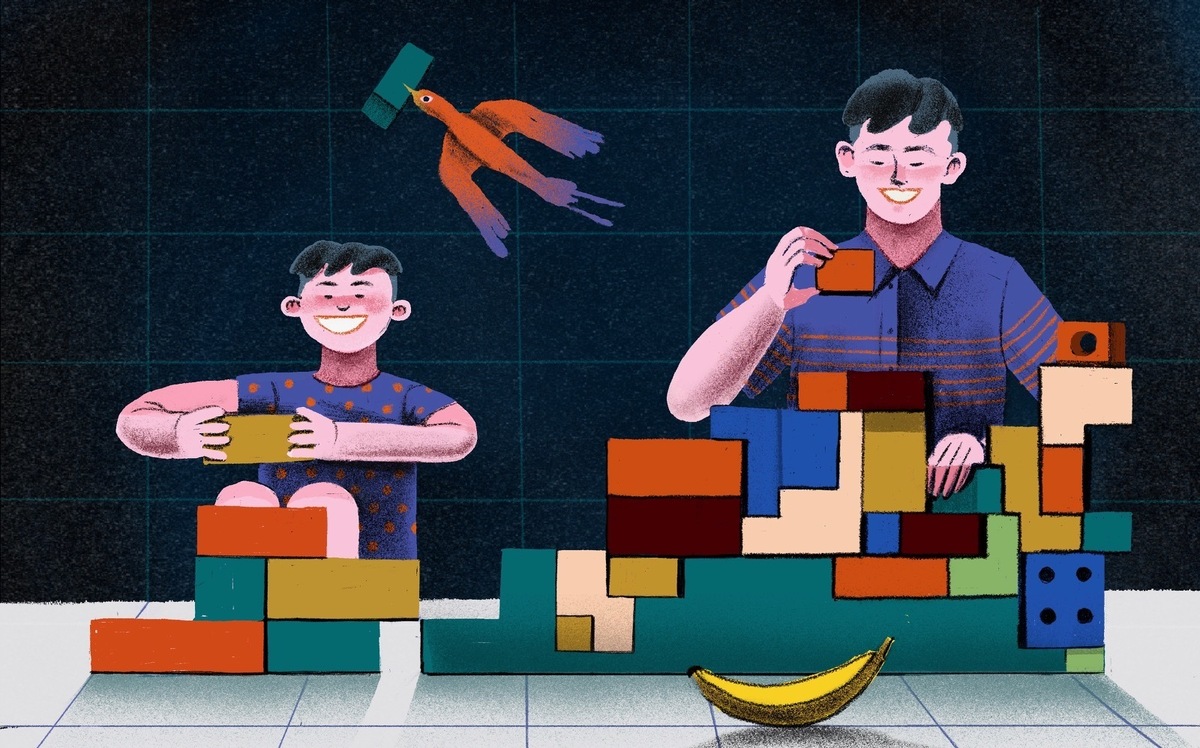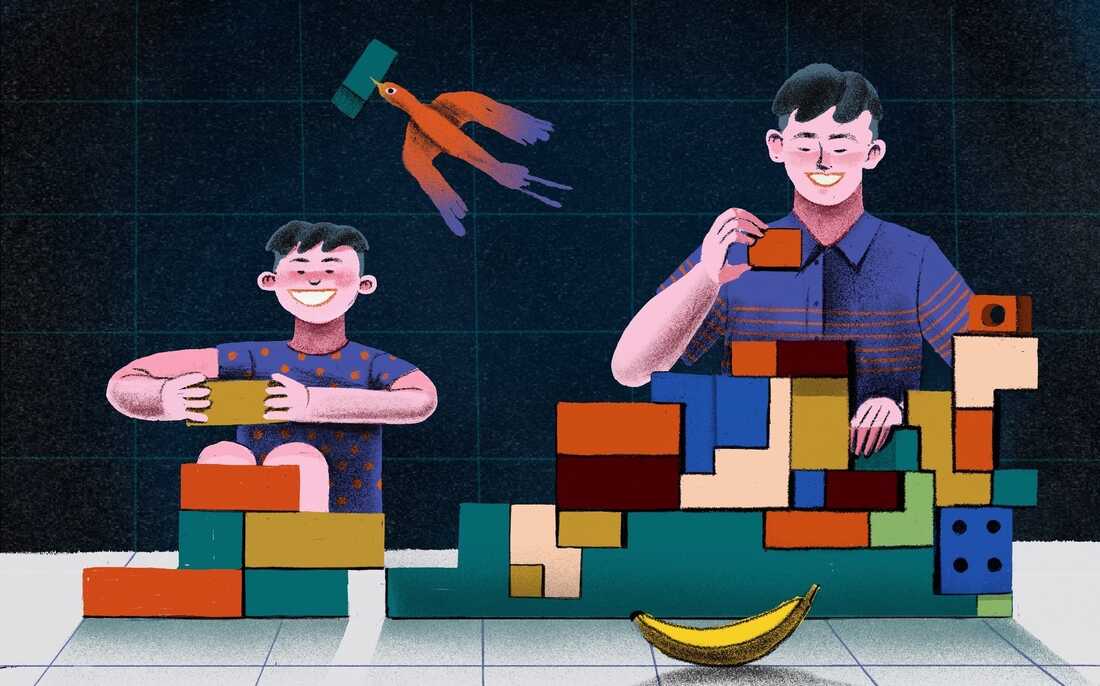
A class of fifth graders taking a one-hour sex education class at 48 Louis B. Russell Junior School in Indianapolis. Some fidget, others chuckle. And they ask a lot of questions.
At what age did you start using tampons?
What is Acne?
It’s April. Her sex education teacher, Haileigh Huggins, does her best to answer all your questions.
One boy asks, “Can boys have babies?”
“No, they can’t get pregnant,” she tells him.
“Because they both have sperm cells, right? No egg cells.”
Huggins is trained to teach age-appropriate and comprehensive sex education. But the time she spends with these students is only one hour. That’s plenty of time to cover basics such as puberty and reproduction.
Those are the lessons that often come to mind when most people think about sex education. comprehensive Sex education goes beyond that. It has been defined by sex education proponents as a science-based, culturally and age-appropriate series of lessons, beginning in the lower grades and continuing through the end of high school. and gender, physical autonomy and consent, relationship skills and media literacy.
With access to abortion changing in many states, proponents of inclusive sex education say it’s more important than ever. Sex education is highly politicized.
Only three states—Washington, California, and Oregon—have mandatory age-appropriate comprehensive sex education in schools. This is from SEICUS, an organization that advocates for progressive sex education policies. In other states, what students learn about sex education depends on what school leaders teach.

Still, research shows that these lessons can lead to better health outcomes for students.
“The main finding of this study is that comprehensive sex education across grades, embedded in supportive school environments and subject areas, can improve adolescents’ academic performance as well as sexual, social and emotional outcomes. Health can be improved.Researcher at Montclair State University in New Jersey.She is co-author of a 2020 paper on the topic.
“Sex education may seem controversial, but it’s never,” said director of sex education and training at Advocates for Youth, an organization that promotes access to comprehensive sex education. says one Nora Gelperin.
Comprehensive sex education, she says, is “always in the young person’s best interest.”
At various age levels starting in grades K-12:
Elementary School: Consent, Personal Boundaries, and Healthy Relationships
Age-appropriate sex education for kindergarteners introduces topics such as consent, family identification, and correct names for body parts.
“When we talk about consent with kindergarteners, it means getting permission before touching others. start learning about their personal boundaries and really agree with their age. increase.
Gelperin loves using hula hoops to teach young children about body autonomy. Each student receives one of her hula hoops and is instructed to ask permission to go inside other people’s hula hoops. A hoop is an analogy for a boundary.
“If someone is touching you in a way that makes you uncomfortable within your boundaries, say no and talk to a trusted adult,” Gelperin tells students.
Another good lesson for younger children is identification trusted adults. Oregon-based sex education instructor Mariotta Gary Smith asks her students to write a list of people they trust in their community.
The list can include peers, next of kin, next of kin, or selected family members. Next, her Gary-Smith, co-founder of the Women of Color Sexual Health Network, asked students to think about how they would talk to the people on their list about safety, respect, and boundaries. receive.

“When they knew there was trust and security in their circle, they felt like they could express themselves without judgment,” she explains.
When students reach third grade, Gelperin says, they need to start learning the characteristics of healthy relationships with friends and family.
“Sometimes teasing and bullying happens in these grades, so I want to talk about how to stop teasing and bullying and how to stand up for others who may be being teased or bullied. ,” she explains.
The focus should also be on respecting other people’s differences, such as different family structures, cultural backgrounds, and religious traditions.
Gelperin says that the lesson on consent should continue throughout elementary schools. She recommends starting her adolescent classes in her senior year.
Middle School: A True Story of Adolescence
As students transition from elementary to middle school, they need to learn the details of reproduction, including biological terminology and why some people menstruate while others make sperm.
“For me, it’s a real hallmark of middle school sex education, and it’s like you’re really starting to understand how these parts and systems work together for reproduction,” Gelperin says.

It’s also a good time to connect the physical effects of puberty and hormones with the glamorous emotions that come with it.
“Who puts butterflies in your stomach? Who makes your palms sweat?” Gelperin says. “One of the changes that comes with puberty is that we experience new hormones that often make us feel attractive to others in new and different ways.”
Students should also learn about sexually transmitted diseases such as HIV and how they are transmitted.

Middle school is a good time to start learning about gender expressions, sexual orientations, and gender stereotypes. One of his lessons in Advocates for Youth includes a scavenger-his-hunt homework, in which students explore the world around them, such as sports ads featuring only men or cleaning product ads featuring only women. Look for gender stereotypes.
High School: When Conversations About Healthy Relationships Deepen
Healthy relationships are a “feature” of comprehensive sex education, says Gelperin. As students progress through high school, conversations need to expand from family and friends to partners and intimate relationships.
“What makes a relationship healthy? How do you know if a relationship isn’t healthy?” Gelperin says.
Sexual abuse, sexual harassment, and sexual assault should also be addressed in these conversations.
At Mountainside High School in Beaverton, Oregon, school health teacher Jen Hicks shares with students statistics about disproportionate rates of sexual violence against women, women of color, and members of the LGBTQ community. doing.
“Sexual violence can happen to anyone, but it doesn’t happen to everyone equally.”
It leads to conversations about consent.
“We need to talk about how we can treat each other better, why consent is important, why we need to listen to each other and protect each other,” Hicks says. “Again, violence is being used as a form of control to keep groups of people incapacitated and terrorized.”

And, of course, the classic high school sex education classes, such as pregnancy, how to prevent sexually transmitted infections, and contraception, follow. According to Gelperin, this class is especially important.
“If we don’t learn how to use condoms properly, we can’t expect young people to know how to use them properly.”
One classic method: bananas. Specifically, have students practice placing a condom on a banana, as recommended by a youth leader’s lesson.
Finally, there are lessons not related to sex (or fruit), such as how to find reliable sources.
Think about all the rumors about sex that can spread in high school. These rumors are also spread all over the internet. Also, it can be difficult for children seeking information to know what to believe.
“We’re enabling children to learn what’s out there. They are,” said sex education researcher Lisa Lieberman, co-author of the paper at Montclair State University. “They’re accessing porn. They’re accessing the internet. They’re learning in a different way than most parents and schools want to convey to their children.”
Advocates for Youth recommends asking students to evaluate various sexual health websites and identify the ones they trust.
For Hicks, the goal of all of this is to give every student the tools they need to stay safe.
“It’s about recognizing everyone in the room, making the best decisions for them, and giving them the knowledge and skills to live a happy and fulfilling life.”
Sex education recommendations are constantly evolving
Mariotta Gary-Smith of the Women of Color Sexual Health Network said sex education a decade ago was neither culturally reflective nor respectful of everyone, including communities of color. increase.
“You don’t see bodies that aren’t white, able-bodied, cis, slender, slim,” she explains. We don’t see or hear of young people, we hear that teenage pregnancies should be stopped, but we don’t respect that there are cultures and communities that celebrate young people who choose to be parents ..”

Gary-Smith has helped create more comprehensive lessons through the Women of Color Sexual Health Network. The sex education standards Gelperin helped create in 2012 were updated in 2020 to include racism, inequality, and implications for sexual health. Youth Advocates lessons provide students with examples of how racism has impacted the health and reproductive rights of low-income women of color, among other groups.
National sex education standards have also been updated to address gender identity, sexual orientation, reproductive justice, and sexually explicit media.
“We were able to look back on the era of 2020. What young people were saying was their lived experience they were desperate to learn and talk about,” says Gelperin.
Keeping sex education inclusive and culturally reflective means teaching about systemic oppression, discrimination, history, and the impact of racism on particular communities, explains Gary-Smith. . For example, Reproductive Her Health lessons can discuss historical examples of forced sterilization of Indigenous women and black women, as well as the criminal justice system as it relates to family relationships.
These lessons may seem far removed from those about consent and gender, and Gary-Smith understands that.
“Everything I talk about now, 10 years ago we weren’t talking about it,” she explains.
This highlights one of the most important features of Gary Smith’s sex education.
“Things shift and change, so they have to shift and change.”
Lee Gaines is from member station WFYI and Elizabeth Miller is from member station OPB. Nicole Cohen We have edited this story for broadcast and digital.

